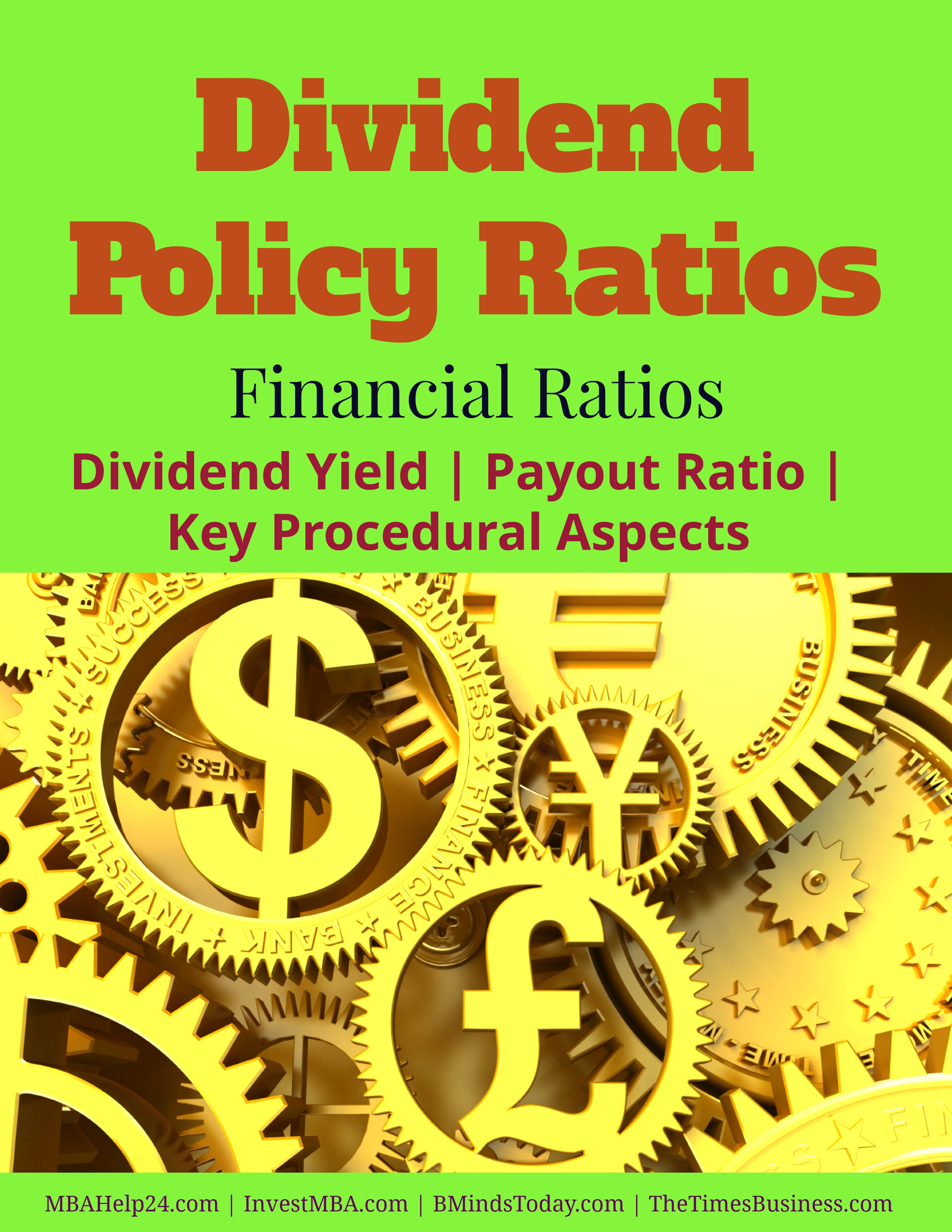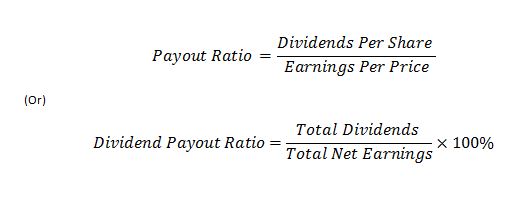Dividend Policy Ratios | Dividend Yield | Payout Ratio | Key Procedural Aspects
You Should Remember
Dividend policy ratios principally measure how much an organisation pays out in dividends relative to its earnings and market value of its shares.
The two primary dividend policy ratios, the dividend yield and payout ratio provide understandings on the subject of an organisation’s dividend strategies and its future growth prospects.

The financial ratios are primarily tools for turning the date enclosed in financial statements into information used by managers and executives to better comprehend what is happening in a company.
Financial ratios are highly advantageous indicators of an organisation’s performance as well as financial environment.
Financial ratios are typically used in the process of analysing trends and also comparing the organization’s financial position to other firms.
In few instances, an effective analysis conducted by financial ratios can help to predict the forthcoming bankruptcy or economic failure.
Financial ratios can typically be grouped according to the data they make available.
You Should Remember
Financial ratios can typically be grouped according to the data they make available. However, there are a few important yet frequently used ratios as mentioned below:
Liquidity ratios,
Asset turnover ratios,
Financial leverage ratios,
Profitability ratios,
Dividend policy ratios.
Liquidity Ratios | Current Ratio | Working Capital Ratio | Quick Ratio
Financial Leverage Ratios | Debt | Total Assets | Equity | Times Interest Earned
Profitability Ratios | Gross Profit Margin | Return On Assets | Return On Equity
Dividend policy ratios
Dividend policy ratios principally measure how much an organisation pays out in dividends relative to its earnings and market value of its shares.
The purpose of these ratios is to have insights pertaining to dividend policy of an organisation. They compare the dividends to the earnings to quantity how much of its earnings an organisation is paying out in dividends. They similarly compare the dividends to share prices to understand how much cash flow the stakeholders receive for their investments in the organisation’s shares.
The two primary dividend policy ratios, the dividend yield and payout ratio provide understandings on the subject of an organisation’s dividend strategies and its future growth prospects.
The dividend yield ratio
Dividend yield is the sum that an organisation pays to its shareholders year after year for their investments.
The dividend yield is calculated as follows:

Dividend yield is most important for the investors who are looking for long term investments and a steady profit every year. However, a high dividend yield does not inevitably translate into a high future rate of return. It is highly essential to consider the prospects for increasing the dividend in the future.
The dividend payout ratio
The dividend payout ratio specifies the percentage of an organisation’s earnings that are paid out as dividends to its common shareholders.
The dividend payout ratio is computed as follows:

Organisations with steady earnings are more likely to pay out better ratio of their earnings as dividends than are firms with more unstable earnings.
Similarly, organisations with a large, ongoing number of high-return investment ventures are less likely to pay out a high quantity of earnings as dividends because of their necessity for the capital to fund those projects.
Key Procedural Aspects Involved In Dividend Payment Process
The key proceedings and times in the dividend payment process are:
- Resolution by Board of Directors: The decision pertaining to dividend payment is at all times the entitlement of the board of directors. Therefore the board of directors ought to conduct a formal meeting in order to take a decision on dividend payment.
- Shareholder’s approval: The resolution of the board of directors to pay the dividend has to be accepted by the shareholders in the annual general meeting.
- Record date: The dividend is to be paid to shareholders whose names appear in the Register of Members as on the record date.
- Dividend payment: Following a dividend declaration process, dividend certifications must be dispatched within 30 days.
Limitations of Financial Ratios
Those who practice financial ratio analysis for decision-making processes must also be conscious of its limitations. Indeed, there are several limitations that influence in contrast to their effectiveness. Those are as follows;
1. The financial analysis cannot be a factual guide to organisation’s performance as it does not help the financial analyst drive deep into operational details.
For example, if an organisation does not keep up a sound depreciation policy and announces huge profits, high profitability ratios would basically be deceptive.
2. The values of the current assets as well as amount produced change frequently which may create misrepresentations in accounting measures of performance and financial situation.
3. The reliability of the standards against which the ratios are seen, is frequently uncertain. Except the norm is consistent, any implication drawn on the basis of ratios may be deceptive.
Hence, those who deal with the ratios must supplement the financial ratio analysis with substitute implements in order to test its trustworthiness.
Concept & Definition of Accounting ?
Characteristics of Accounting ?
Key Differences Between Accounting & finance ?
basis of accounting: Cash Basis & Accrual Basis ?
Fundamental Financial Accounting Assumptions, Principles & Conventions
Core Steps in Accounting Cycle | During & End of Accounting Period
4 Financial Statements | Balance Sheet | Retained Earnings | Cash Flows
The Balanced Scorecard | Comprehensive Knowledge | Measures | Perspectives
Capital Budgeting | Definitions | Features | Process | FIVE Stages
Capital Budgeting Decisions | Criteria | Substitute Directions | Implications
Liquidity Ratios | Current Ratio | Working Capital Ratio | Quick Ratio
Financial Leverage Ratios | Debt | Total Assets | Equity | Times Interest Earned
Profitability Ratios | Gross Profit Margin | Return On Assets | Return On Equity


































































































